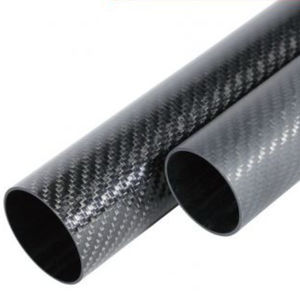
- Components - Spare Parts
- Hydraulic System
- Pipe for aerospace applications
- Rock West Composites

- Products
- Catalogs
- News & Trends
- Exhibitions
Plastic tube T-RND-039thermoplasticfor aerospace applicationstransfer
Add to favorites
Compare this product
fo_shop_gate_exact_title
Characteristics
- Material
- plastic, thermoplastic
- Applications
- for aerospace applications, transfer, process
- Other characteristics
- smooth
Description
Pultruded unidirectional tubes are manufactured through a pultrusion process whereby all fibers are oriented in the "0" degree direction. Because of the fiber orientation this tube provides strength and rigidity along the axis of rod however these products are not good for torque transfer OR crush resistance. Pultruded tube is great for reinforcing structures. The pultrusion process guarantees an accurate design and measurement control, perfectly aligned fibers and a smooth surface.
Pultruded unidirectional tubes are manufactured through a pultrusion process whereby all fibers are oriented in the "0" degree direction. Because of the fiber orientation this tube provides strength and rigidity along the axis of rod however these products are not good for torque transfer OR crush resistance. Pultruded tube is great for reinforcing structures. The pultrusion process guarantees an accurate design and measurement control, perfectly aligned fibers and a smooth surface.
The pultrusion process shows great similarities with the extrusion of e.g. aluminum and thermoplastic plastics. However, instead of injection molding the plastic material, the pultrusion process continuously pulls fibers from rolls, which are then wetted with a matrix material (usually a thermosetting resin like epoxy resin). Subsequently, they are pulled through a heated die, which determines the shape of the profile. Polymerisation of the resin takes place in the die, forming a rigid profile with a diameter corresponding to that of the die and a length that is endless, in theory.
The technology is suitable for all types of fibers or a combination of fiber types. A high fiber-volume content is feasible,
Other Rock West Composites products
Roll Wrapped Carbon Fiber Tubing
Related Searches
*Prices are pre-tax. They exclude delivery charges and customs duties and do not include additional charges for installation or activation options. Prices are indicative only and may vary by country, with changes to the cost of raw materials and exchange rates.


